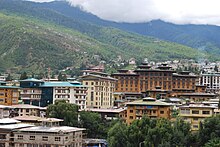The Business and Economics Portal Business is the practice of making one's living or making money by producing or buying and selling products (such as goods and services). It is an activity or enterprise entered into for profit." A business entity is not necessarily separate from the owner and the creditors can hold the owner liable for debts the business has acquired. The taxation system for businesses is different from that of the corporates. A business structure does not allow for corporate tax rates. The proprietor is personally taxed on all income from the business. A distinction is made in law and public offices between the term business and a company such as a corporation or cooperative. Colloquially, the terms are used interchangeably. (Full article...) Economics (/ˌɛkəˈnɒmɪks, ˌiːkə-/) is a social science that studies the production, distribution, and consumption of goods and services. Economics focuses on the behaviour and interactions of economic agents and how economies work. Microeconomics analyses what is viewed as basic elements within economies, including individual agents and markets, their interactions, and the outcomes of interactions. Individual agents may include, for example, households, firms, buyers, and sellers. Macroeconomics analyses economies as systems where production, distribution, consumption, savings, and investment expenditure interact, and factors affecting it: factors of production, such as labour, capital, land, and enterprise, inflation, economic growth, and public policies that have impact on these elements. It also seeks to analyse and describe the global economy. (Full article...) Selected article The London Necropolis Company (LNC), formally the London Necropolis & National Mausoleum Company until 1927, was a cemetery operator established by Act of Parliament in 1852 in reaction to the crisis caused by the closure of London's graveyards in 1851. The LNC intended to establish a single cemetery large enough to accommodate all of London's future burials in perpetuity. The company's founders recognised that the recently invented technology of the railway provided the ability to conduct burials far from populated areas, mitigating concerns over public health risks from living near burial sites. Accordingly, the company bought a large tract of land in Brookwood, Surrey, around 25 miles (40 km) from London, and converted a portion of it into Brookwood Cemetery. A dedicated railway line, the London Necropolis Railway, linked the new cemetery to the city. Financial mismanagement and internal disputes led to delays in the project. By the time Brookwood Cemetery opened in late 1854, a number of other cemeteries had opened nearer to London or were in the process of opening. While some parishes in London did arrange for the LNC to handle the burials of their dead, many preferred to use nearer cemeteries. The LNC had anticipated handling between 10,000 and 50,000 burials per year, but the number never rose above 4,100 per year, and in its first 150 years of operations only 231,730 burials had been conducted. Buying the land for Brookwood Cemetery and building the cemetery and railway had been very expensive, and by the time the cemetery opened the LNC was already on the verge of bankruptcy. The LNC remained solvent by selling surplus parts of its land, but as the land had been chosen for its remoteness, sales were low. Selected image
Selected economyThe economy of Bhutan is based on agriculture and forestry, which provide the main livelihood for more than 60% of the population. Agriculture consists largely of subsistence farming and animal husbandry. Rugged mountains dominate the terrain and make the building of roads and other infrastructure difficult. Bhutan is among the richest by gross domestic product (nominal) per capita in South Asia, at $3,491 as of 2022, but it still places 153rd, and among the poorest in the world. The total gross domestic product is only $2,653 million, and 178th according to IMF. Bhutan's economy is closely aligned with India's through strong trade and monetary links and dependence on India's financial assistance. Most production in the industrial sector is of the cottage industry type. Most development projects, such as road construction, rely on Indian migrant labour. Model education, social, and environment programs are underway with support from multilateral development organisations. (Full article...) Selected quote"Manufacturing is also done through teamwork. It might take 10 or 15 workers, for example, to take a job from raw materials to finished product. The idea is teamwork - not how many parts were machined or drilled by one worker, but how many products were completed by the line as a whole. Years ago, I used to tell production workers one of my favorite stories about a boat rowed by eight men, four on the left side and four on the right side. If they do not row correctly, the boat will zigzag erratically. One rower might feel he is stronger than the next and row twice as hard. But this extra effort upsets the boat's progress and moves it off course. The best way to propel the boat faster is for everyone to distribute force equally, rowing evenly and at the same depth. Today a volleyball team has six players; previously there were nine. If a nine-member team tried to play a six-member team using the same plays, players might be injured bumping into one another. They would probably lose also because having more players is not necessarily an advantage. Teamwork combined with other factors can allow a smaller team to win. The same is true in a work environment."
TopicsRelated WikiProjectsDid you know (auto-generated) -
On this day in business history
General imagesThe following are images from various business-related articles on Wikipedia.
More did you know
Business news
SubcategoriesRelated portals
Things you can doUrgent and important articles are bold
WikimediaThe following Wikimedia Foundation sister projects provide more on this subject:
SourcesDiscover Wikipedia using portals |






































